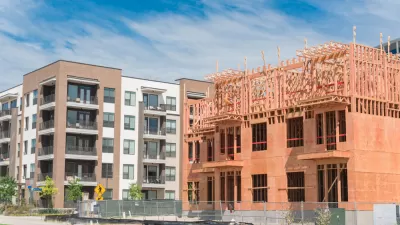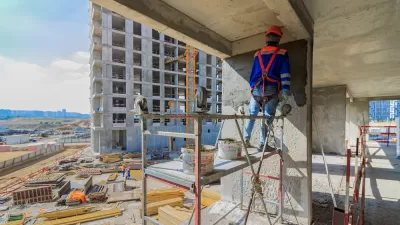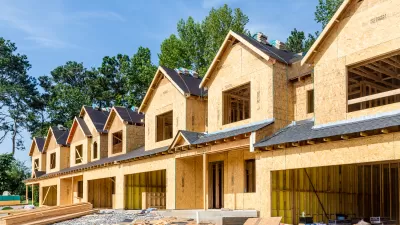New research sheds new light on one of the most hotly debated questions in planning and development.

A new research paper from a trio of Finnish economists provides empirical evidence on the effects of new development's effect on housing costs. An article by Timothy B. Lee shares insights into the findings and methodology of the study.
Regarding the methodology:
The Finnish government has a population register that collects data about where individuals live. The researchers got access to this data and were able to follow individuals as they moved from place to place in the Helsinki metro area. This data allowed them to trace exactly how the construction of new luxury apartment buildings in high-end neighborhoods impacted the broader housing market.
Regarding the findings, the research finds that the process of filtering can start with high-end development in wealthier neighborhoods and end with cost savings in low-income neighborhoods.
Here is how Lee defines and describes filtering:
When a new apartment comes on the market, it starts a chain reaction. Often, the person who rents the new apartment is moving out of an old apartment in the same metropolitan area. That creates a vacancy that can be filled by another renter. That person, in turn, may be vacating a third apartment. These “moving chains” can extend for six or more steps, with Helsinki residents playing a game of musical chairs to find better or cheaper housing options.
As for the findings:
“For each 100 new, centrally located market-rate units, roughly 60 units are created in the bottom half of neighborhood income distribution through vacancies,” the researchers write. "Even more remarkable, 29 vacancies are created in neighborhoods in the bottom quintile of the income distribution."
While this newest entry into the effects of new development in the Helsinki market, research in other parts of the world, and specifically in the United States, have yet to resolve the debate about the price effects of housing development. Lee also cites the latest research on examples in the United States, published in July 2021 by Notre Dame economist Evan Mast.
Mast found that 67 percent of people who moved into a new luxury apartment building came from another apartment in the same metropolitan area. Of these, only 20 percent of the people who moved into luxury apartment buildings came directly from neighborhoods with below-average incomes. But that set off a moving chain that was more likely to reach lower-income neighborhoods. By the sixth link in the chain, 40 percent of movers were coming from neighborhoods with below-average incomes.
Planetizen also picked up news of Mast's work in 2019 and May 2021. At the close of 2020, German researchers published evidence of similar effects as those discovered in Helsinki. In February 2021, researchers at UCLA gathered all of the recent research on the effect of market-rate development into one white paper, finding uneven results depending on the market.
FULL STORY: How luxury apartment buildings help low-income renters

Trump Administration Could Effectively End Housing Voucher Program
Federal officials are eyeing major cuts to the Section 8 program that helps millions of low-income households pay rent.

Planetizen Federal Action Tracker
A weekly monitor of how Trump’s orders and actions are impacting planners and planning in America.

Ken Jennings Launches Transit Web Series
The Jeopardy champ wants you to ride public transit.

California Invests Additional $5M in Electric School Buses
The state wants to electrify all of its school bus fleets by 2035.

Austin Launches $2M Homelessness Prevention Fund
A new grant program from the city’s Homeless Strategy Office will fund rental assistance and supportive services.

Alabama School Forestry Initiative Brings Trees to Schoolyards
Trees can improve physical and mental health for students and commnity members.
Urban Design for Planners 1: Software Tools
This six-course series explores essential urban design concepts using open source software and equips planners with the tools they need to participate fully in the urban design process.
Planning for Universal Design
Learn the tools for implementing Universal Design in planning regulations.
Ada County Highway District
Clanton & Associates, Inc.
Jessamine County Fiscal Court
Institute for Housing and Urban Development Studies (IHS)
City of Grandview
Harvard GSD Executive Education
Toledo-Lucas County Plan Commissions
Salt Lake City
NYU Wagner Graduate School of Public Service





























